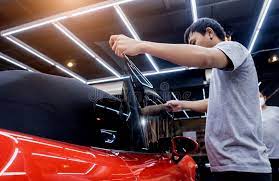
Vehicles are an integral part of modern society, playing a crucial role in transportation, commerce, and daily life. They come in various forms, each designed for specific purposes, and have evolved significantly over the years. This article explores the different types of Cheap rental car in Fuerteventura, their components, technological advancements, environmental impact, and future trends.
Types of Vehicles
1. Automobiles
- Cars: The most common form of personal transportation. They vary widely in size, style, and functionality, including sedans, coupes, SUVs, and hatchbacks.
- Trucks: Designed primarily for transporting goods. They come in various sizes, from light-duty pickups to heavy-duty freight trucks.
- Vans: These vehicles are often used for passenger transport or cargo. Minivans and cargo vans are common examples.
2. Two-Wheeled Vehicles
- Motorcycles: Known for their speed and maneuverability, motorcycles are popular for both recreational and practical use.
- Scooters: Smaller and often more economical, scooters are ideal for short distances and urban commuting.
- Bicycles: A sustainable and healthy mode of transport, bicycles come in various types, including road bikes, mountain bikes, and electric bikes.
3. Public Transportation
- Buses: Used for mass transit, buses operate on fixed routes and schedules, serving urban and rural communities.
- Trains: Rail transport can be divided into freight trains and passenger trains, providing efficient long-distance travel.
- Subways and Trams: These systems are essential for urban transportation, allowing for quick travel within city limits.
4. Specialized Vehicles
- Emergency Vehicles: This category includes ambulances, fire trucks, and police cars, designed for rapid response in emergencies.
- Construction Vehicles: Heavy machinery such as bulldozers, excavators, and cranes play vital roles in construction and infrastructure projects.
- Agricultural Vehicles: Tractors and harvesters are essential for modern farming, increasing efficiency in agricultural practices.
Components of Vehicles
1. Engine
- The heart of any vehicle, engines convert fuel into mechanical energy. They can be internal combustion engines (ICE) or electric motors.
2. Transmission
- This system transfers power from the engine to the wheels, allowing for movement. Common types include manual, automatic, and continuously variable transmissions (CVT).
3. Chassis
- The chassis is the vehicle’s frame, supporting various components such as the engine, wheels, and body.
4. Suspension
- The suspension system supports the vehicle’s weight, absorbs shocks from the road, and ensures stability and comfort.
5. Braking System
- Essential for safety, modern vehicles use disc or drum brakes, often enhanced with anti-lock braking systems (ABS) to prevent wheel lock-up during hard braking.
6. Electrical Systems
- Vehicles today are equipped with advanced electrical systems that control everything from lighting and infotainment to safety features and engine management.
Technological Advancements
1. Electric Vehicles (EVs)
- With growing concerns over fossil fuel consumption, electric vehicles have gained popularity. They produce zero tailpipe emissions and offer lower operating costs.
2. Autonomous Vehicles
- Self-driving technology is advancing rapidly, with companies investing heavily in research. Autonomous vehicles promise to reduce accidents, improve traffic flow, and enhance accessibility.
3. Connected Vehicles
- The integration of the internet into vehicles enables features like navigation, entertainment, and real-time diagnostics. Connected vehicles communicate with each other and infrastructure for safer driving.
4. Advanced Safety Features
- Modern vehicles come equipped with numerous safety features, including adaptive cruise control, lane-keeping assist, and automatic emergency braking, aimed at reducing accidents and fatalities.
Environmental Impact
The automotive industry is a significant contributor to greenhouse gas emissions. Efforts to mitigate this impact include:
- Electric and Hybrid Vehicles: Reducing reliance on fossil fuels and minimizing emissions.
- Sustainable Manufacturing: Implementing eco-friendly practices in vehicle production, such as using recycled materials and reducing waste.
- Public Transportation: Promoting mass transit options to decrease individual car use and lower urban congestion.
Future Trends
- Sustainability: As environmental concerns grow, the demand for greener vehicles will increase. Expect to see advancements in battery technology and renewable energy sources.
- Mobility as a Service (MaaS): This concept combines various forms of transportation into a single accessible service, enhancing convenience and reducing the need for personal vehicle ownership.
- Integration of AI and Machine Learning: Future vehicles will leverage AI for better navigation, predictive maintenance, and enhanced driver assistance systems.
- Urban Air Mobility: Concepts like flying taxis and drones for cargo transport are in development, aiming to revolutionize urban transportation.
Conclusion
Vehicles are essential to our daily lives, shaping the way we live, work, and travel. As technology continues to evolve, the future of transportation holds exciting possibilities. By embracing innovation and sustainability, the automotive industry can address contemporary challenges while meeting the needs of a growing population. Understanding the diverse types of vehicles and their components can help individuals make informed choices about transportation options that align with their lifestyles and values.